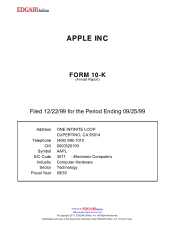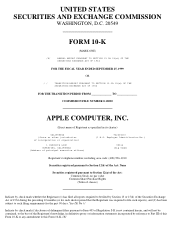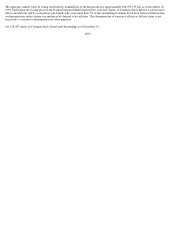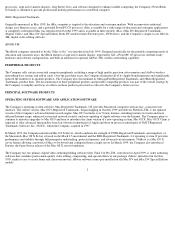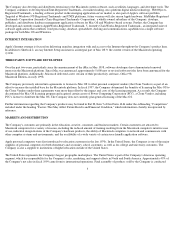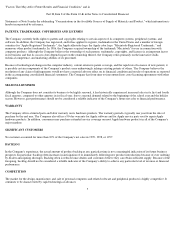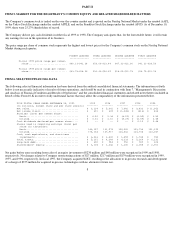Apple 1999 Annual Report Download - page 8
Download and view the complete annual report
Please find page 8 of the 1999 Apple annual report below. You can navigate through the pages in the report by either clicking on the pages listed below, or by using the keyword search tool below to find specific information within the annual report."Factors That May Affect Future Results and Financial Condition," and in
Part II, Item 8 of this Form 10-K in the Notes to Consolidated Financial
Statements at Note 8 under the subheading "Concentrations in the Available Sources of Supply of Materials and Product," which information is
hereby incorporated by reference.
PATENTS, TRADEMARKS, COPYRIGHTS AND LICENSES
The Company currently holds rights to patents and copyrights relating to certain aspects of its computer systems, peripheral systems, and
software. In addition, the Company has registered, and/or has applied to register, trademarks in the United States and a number of foreign
countries for "Apple-Registered Trademark-", the Apple silhouette logo, the Apple color logo, "Macintosh-Registered Trademark-," and
numerous other product trademarks. In 1986, the Company acquired ownership of the trademark "Macintosh" for use in connection with
computer products. Although the Company believes the ownership of such patents, trademarks, copyrights, and licenses is an important factor
in its business and that its success does depend in part on the ownership thereof, the Company relies primarily on the innovative skills,
technical competence, and marketing abilities of its personnel.
Because of technological changes in the computer industry, current extensive patent coverage, and the rapid rate of issuance of new patents, it
is possible certain components of the Company's products may unknowingly infringe existing patents of others. The Company believes the
resolution of any claim of infringements would not have a material adverse effect on its financial condition and results of operations as reported
in the accompanying consolidated financial statements. The Company has from time to time entered into cross-licensing agreements with other
companies.
SEASONAL BUSINESS
Although the Company does not consider its business to be highly seasonal, it has historically experienced increased sales in its first and fourth
fiscal quarters, compared to other quarters in its fiscal year, due to seasonal demand related to the beginning of the school year and the holiday
season. However, past performance should not be considered a reliable indicator of the Company's future net sales or financial performance.
WARRANTY
The Company offers a limited parts and labor warranty on its hardware products. The warranty period is typically one year from the date of
purchase by the end user. The Company also offers a 90-day warranty for Apple software and for Apple service parts used to repair Apple
hardware products. In addition, consumers may purchase extended service coverage on most Apple hardware products in all of the Company's
major markets.
SIGNIFICANT CUSTOMERS
No customer accounted for more than 10% of the Company's net sales in 1999, 1998, or 1997.
BACKLOG
In the Company's experience, the actual amount of product backlog at any particular time is not a meaningful indication of its future business
prospects. In particular, backlog often increases in anticipation of or immediately following new product introductions because of over ordering
by dealers anticipating shortages. Backlog often is reduced once dealers and customers believe they can obtain sufficient supply. Because of the
foregoing, backlog should not be considered a reliable indicator of the Company's ability to achieve any particular level of revenue or financial
performance.
COMPETITION
The market for the design, manufacture, and sale of personal computers and related software and peripheral products is highly competitive. It
continues to be characterized by rapid technological advances
5

